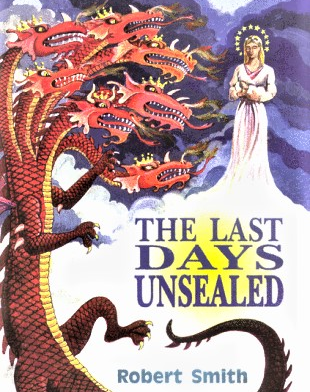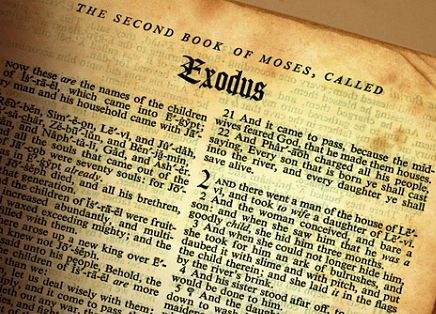Exodus is the second of the so-called books of Moses, called the Pentateuch or the Torah in Hebrew. These five books along with Joshua comprise the Hexateuch The book of Joshua is rightly part of this history because it is the concluding book of the Exodus and entry into the promised land. Without Joshua, the history is not complete.
This book, Exodus, as with Genesis, is a compilation of both oral histories and written documents. And like Genesis, there are several versions of this book. Since we do not know who wrote them, scholars have given them letter designations based on various characteristics. There are four major documents or versions of the Hexateuch. The earliest and most prominent of these is called the J version. It is named that because this version uses the name Jehovah in Genesis. The second oldest and most prominent version is the E version. It is called that because it refrains from using the name Jehovah and uses Elohim for God in place of his name, Jehovah.
At some later date, an editor, which scholars call a redactor, took the two documents, J and E, and combined them into a single version, which is now called the RJE meaning the combined J and E versions by the redactor R. The JE is usually dropped from this designation and it is simply referred to as the R version.
Before the R document was created, however, there was a third document written, which is Deuteronomy. The writer of this document is called D for that reason. This is the law book that was found in the temple in the reign of Josiah. The writer of this document also combined the J and E versions of the Hexateuch and the result was the JED version or the D version as it is referred to. This document or author is often referred to as RD or the Redactor of the D version. This document was produced around the reign of Josiah, who became king in 640 BC. The J and E versions date to at least 800 BC or earlier.
The final major written version is the P version. It is a very late document, or post exilic, as we refer to the time following the Babylonian exile. After the Jews returned from exile, some editor or redactor as he is called, produced a different and new version. It is designated the P version because it contains a great amount of priestly legislation. The redactor took the existing versions, particularly JED and produced the JEDP version. The writer is referred to as the RP redactor.
The existing version found in the Bible version today is basically the JEDP or just the P version, as it is generally called. The major portions are taken directly from J and E, and so I refer to them, and the major part of these books comes from those two ancient documents. P and D added much additional information that is not relevant to Genesis and that book generally relies only on the J and E accounts. But in the later books, there is much added material that came from the two later redactors, and that is why I am giving this explanation here.
When Israel was taken into exile in 721 BC, the J version written in the north, became of less importance than the E. But in 587 BC Judah was taken into captivity in Babylonia. The remaining people of the northern kingdom of Israel and the exiles of Judah in Babylonia, apparently attempted to reconcile the differences in their two different versions of Israel’s history. The result was the combination of the J and E versions that were mainly used to produce the biblical narratives.
I know this may be a little confusing, but it is necessary to explain some or most of the many inconsistencies we find, as I pointed out in the middle and later chapters of Genesis. That said, we can read it without worrying too much about this situation.
Exodus is to the Old Testament what the Gospels are to the New Testament. This is the book that is the beginning of Israel as a nation. It defines the people and the doctrines. It is the revelation of Jehovah to the people, and the long awaited “great deliverance” of Joseph.
Israel existed as a people before the exodus, of course, but we have no existing history of that time, except some fragments of documents. The major and early history is contained in the brass plates of Laban, which Lehi brought to this hemisphere. No one knows the whereabouts of the brass plates now, except perhaps Pele. We will have to wait for that history. Israel dwindled from a great people in the time of Joseph to an apostate and enslaved group of sheepherders. That was how Moses found them. So for us and for all of Israel, our history begins with this book. Its importance is therefore quite obvious.
The exodus itself is a type of the great last-days exodus that will happen in our time. There have been many exoduses of righteous remnants in the history of the Lord’s people. Most of them were quite small, such as Noah’s escape on the ark, the Jaredites, the Nephites and Mulekites, and the Jews at the Babylonian invasion. But the big one and the one referred to in capital letters, is this Exodus from Egypt. It is the type of all subsequent exoduses, including the very large one in our time. These are the two big ones.
In addition, the events at Sinai are a great extended type of the last days and the apostasy of Ephraim. I will discuss the many correspondences when we come to that important event.
The idea of Exodus embodies the overall concept that religion has to do with redemption. God’s purpose is the redemption of man, and specifically of a chosen people. This chosen people relies on faith that they are his people, and that faith is based on a historical revelation of some sort that documents that historical beginning. This historical revelation is both historical and elective. God puts things in motion and reveals himself, but man, Israel, has to make the proper decisions to take advantage, and in most cases, to even be part of the community.
This historical revelation entails a church. They did not refer to it literally as this, but it is a community of believers who are bound by covenant with God and with each other. They have ecclesiastic leaders who function in the ritual of the church. The historical revelation and faith can only be affirmed within this church or community. The church or faith is not made a lasting community merely by a common life or common principles and ritual. It has to be based on some remembrance and celebration of the particular historical event, which the church affirms as the beginning or event of initial revelation.
It is this historic event that the Jews have retained throughout the years. The celebration of the Passover and Exodus is the one continuing and permanent, along with being the greatest ritual of remembrance in their history. It is what they use to define them, and it has largely kept them from being swept up in the universal change in society and nations that swallows up movements and religions, effectively eliminating them as viable and distinct religious entities.
The same is true in the restored Church. The historical basis for the Church is the same type of historical revelation of God in the early 1800s. The appearance of the Father and Son to Joseph, the restoration of the Priesthood, the translation of ancient documents and a prophet who was the gateway for all these events, are the affirming historical bases of the Church. They are similar to the events of this great epic exodus in ancient times. As I will show, the original exodus and making of the covenant, is a type of this restoration of the Church and covenant in our time.
In the Old Testament it is primarily this book of Exodus that has prevented the religion of Jehovah, Yahwism, from being swallowed up in the advance of history and non-historical systems that have come and gone. It is not only important to Jews today, but as Ephraim gathered again, it becomes of equal importance to us, or at least it should be. While the religious requirements have been in part superseded by modern revelation, from the standpoint of historical revelation, it was also the beginning of our own tribe, at last gathered awaiting another important exodus. With these ideas in mind, then we can begin to examine this important book.
The book can be divided into about five parts. The first part is the preamble covering Israel in Egypt. The second part is the preparation for deliverance. Moses is called and confronts Pharaoh. We have two accounts of the calling of Moses. The first is from J and E, and the second is from P.
The third part is the demonstration of God’s power to Pharaoh and to the Egyptians, the Passover and the journey to Sinai. The fourth part is the experience at Sinai. The fifth part comprises chapters 25-40 and is from the P redaction except for chapters 32-34. The P redaction covers the ordinances and rituals of the church.
The first four parts are of main interest to us, and you may not be too interested in the final chapters covering the ritual. There are some good things there, however.
-Robert Smith
To read Robert Smith’s commentary on Exodus, Numbers, Ezra, and Nehemiah, click on the link below.

